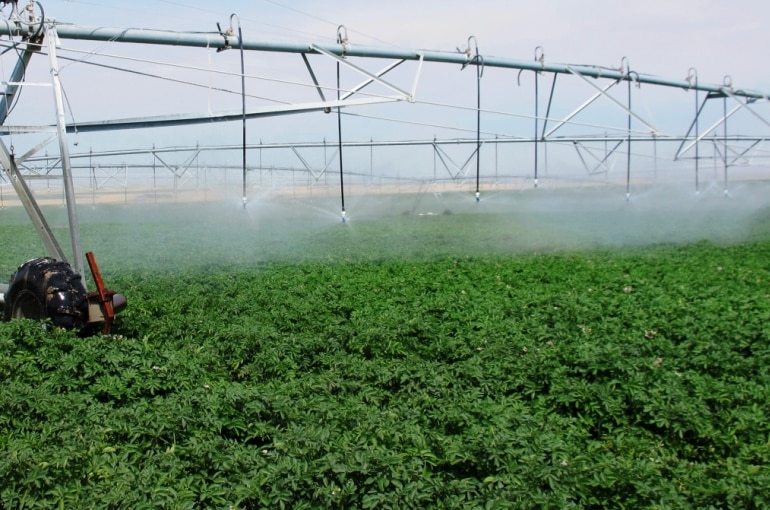Potato Water Requirements and Irrigation Systems

This post is also available in:
This post is also available in:
![]() Español (Spanish)
Español (Spanish) ![]() Français (French)
Français (French) ![]() Deutsch (German)
Deutsch (German) ![]() Nederlands (Dutch)
Nederlands (Dutch) ![]() हिन्दी (Hindi)
हिन्दी (Hindi) ![]() العربية (Arabic)
العربية (Arabic) ![]() Türkçe (Turkish)
Türkçe (Turkish) ![]() 简体中文 (Chinese (Simplified))
简体中文 (Chinese (Simplified)) ![]() Русский (Russian)
Русский (Russian) ![]() Italiano (Italian)
Italiano (Italian) ![]() Ελληνικά (Greek)
Ελληνικά (Greek) ![]() Português (Portuguese (Brazil))
Português (Portuguese (Brazil)) ![]() Tiếng Việt (Vietnamese)
Tiếng Việt (Vietnamese) ![]() Indonesia (Indonesian)
Indonesia (Indonesian) ![]() polski (Polish)
polski (Polish)
How to irrigate potatoes – Potato Irrigation Requirements
The irrigation systems most commonly used in potato cultivation are drip irrigation (labor intensive), sprinkler systems, overhead rain guns and boom irrigation.
According to FAO, for high yields, the crop water requirements (ETm) for a 120 to 150 day crop are 500 to 700 mm, depending on climate. The water needs of potato plants are generally smaller during the first stages of the plant development and they gradually increase during maturation and the later stages of tuber growth. For winter cultivation, many farmers irrigate as much as two times a week (depending on rainfall), while during drought they normally irrigate more often. In sandy soils, farmers shall irrigate more frequently than in heavy soils. It is important for the soil to remain wet at all times. To optimize yields, the total available soil water should not be depleted by more than 30 to 50%. However, keep in mind that over irrigation leads to erosion, disease susceptibility, water loss, extra energy costs for pumping, nitrogen leaching, and decreased crop yields. On the other hand, water-stressed plants are more susceptible to diseases.
You can enrich this article by leaving a comment or photo of your potato irrigation methods.
3.) Growing Potatoes for Profit
4.) Soil Requirements and Preparation for Potato cultivation
5.) Potato Planting, Seeding Rate and Plant Spacing
6.) Potato Fertilizer Requirements
7.) Potato Water Requirements and Irrigation Systems
9.) Potato Harvest, Yield and Storage
Do you have experience in potato cultivation? Please share your experience, methods and practices in the comments below. All the content you add will be soon reviewed by our agronomists. Once approved, it will be added to Wikifarmer.com and it will influence positively thousands of new and experienced farmers across the world.








































































